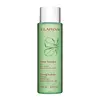What's inside
What's inside
 Key Ingredients
Key Ingredients

 Benefits
Benefits

 Concerns
Concerns

 Ingredients Side-by-side
Ingredients Side-by-side

Water
Skin ConditioningButylene Glycol
HumectantAloe Barbadensis Extract
Skin ConditioningArginine
MaskingLavandula Angustifolia Flower/Leaf/Stem Extract
MaskingMelissa Officinalis Leaf Extract
Skin ConditioningCitrus Limon Peel Oil
MaskingCitrus Aurantium Bergamia Fruit Oil
MaskingCymbopogon Winterianus Herb Oil
PerfumingGlycine
BufferingAlanine
MaskingSerine
MaskingLavandula Angustifolia Oil
MaskingDipotassium Glycyrrhizate
HumectantCucumis Sativus Fruit Extract
EmollientArnica Montana Flower Extract
MaskingHedera Helix Extract
AntimicrobialMalva Sylvestris Flower Extract
Skin ConditioningParietaria Officinalis Extract
EmollientSambucus Nigra Flower Extract
RefreshingTocopherol
AntioxidantPhenylalanine
MaskingHistidine
HumectantValine
MaskingIsoleucine
Skin ConditioningProline
Skin ConditioningThreonine
Sodium PCA
HumectantSodium Lactate
BufferingCitric Acid
BufferingPolyquaternium-4
Aspartic Acid
MaskingPCA
HumectantEthylhexylglycerin
Skin ConditioningMethyl Gluceth-20
HumectantPolysorbate 20
Emulsifying1,2-Hexanediol
Skin ConditioningCaprylyl Glycol
EmollientPEG-12 Dimethicone
Skin ConditioningRicinoleth-40
CleansingSodium Citrate
BufferingSodium Hydroxide
BufferingTetrasodium Glutamate Diacetate
Linalool
PerfumingLimonene
PerfumingCitral
PerfumingGeraniol
PerfumingPhenoxyethanol
PreservativeWater, Butylene Glycol, Aloe Barbadensis Extract, Arginine, Lavandula Angustifolia Flower/Leaf/Stem Extract, Melissa Officinalis Leaf Extract, Citrus Limon Peel Oil, Citrus Aurantium Bergamia Fruit Oil, Cymbopogon Winterianus Herb Oil, Glycine, Alanine, Serine, Lavandula Angustifolia Oil, Dipotassium Glycyrrhizate, Cucumis Sativus Fruit Extract, Arnica Montana Flower Extract, Hedera Helix Extract, Malva Sylvestris Flower Extract, Parietaria Officinalis Extract, Sambucus Nigra Flower Extract, Tocopherol, Phenylalanine, Histidine, Valine, Isoleucine, Proline, Threonine, Sodium PCA, Sodium Lactate, Citric Acid, Polyquaternium-4, Aspartic Acid, PCA, Ethylhexylglycerin, Methyl Gluceth-20, Polysorbate 20, 1,2-Hexanediol, Caprylyl Glycol, PEG-12 Dimethicone, Ricinoleth-40, Sodium Citrate, Sodium Hydroxide, Tetrasodium Glutamate Diacetate, Linalool, Limonene, Citral, Geraniol, Phenoxyethanol
Water
Skin ConditioningPropanediol
SolventAloe Barbadensis Leaf Juice
Skin ConditioningPropylene Glycol
HumectantGlycerin
HumectantOleth-20
CleansingSodium Chloride
MaskingPhenoxyethanol
PreservativeDisodium EDTA
Methylparaben
PreservativeParfum
MaskingSodium Citrate
BufferingPanthenol
Skin ConditioningAlpha-Glucan Oligosaccharide
CleansingHamamelis Virginiana Water
AstringentPsidium Guajava Fruit Extract
AstringentIris Florentina Root Extract
MaskingLinalool
PerfumingBenzyl Salicylate
PerfumingLimonene
PerfumingHydroxycitronellal
PerfumingGlucose
HumectantBenzyl Benzoate
AntimicrobialHexyl Cinnamal
PerfumingCrataegus Monogyna Flower Extract
Skin ConditioningCitric Acid
BufferingPotassium Sorbate
PreservativeSodium Benzoate
MaskingZinc Sulfate
AntimicrobialSorbic Acid
PreservativeCI 19140
Cosmetic ColorantCI 42090
Cosmetic ColorantSilica
AbrasiveWater, Propanediol, Aloe Barbadensis Leaf Juice, Propylene Glycol, Glycerin, Oleth-20, Sodium Chloride, Phenoxyethanol, Disodium EDTA, Methylparaben, Parfum, Sodium Citrate, Panthenol, Alpha-Glucan Oligosaccharide, Hamamelis Virginiana Water, Psidium Guajava Fruit Extract, Iris Florentina Root Extract, Linalool, Benzyl Salicylate, Limonene, Hydroxycitronellal, Glucose, Benzyl Benzoate, Hexyl Cinnamal, Crataegus Monogyna Flower Extract, Citric Acid, Potassium Sorbate, Sodium Benzoate, Zinc Sulfate, Sorbic Acid, CI 19140, CI 42090, Silica
Ingredients Explained
These ingredients are found in both products.
Ingredients higher up in an ingredient list are typically present in a larger amount.
Citric Acid is an alpha hydroxy acid (AHA) naturally found in citrus fruits like oranges, lemons, and limes.
Like other AHAs, citric acid can exfoliate skin by breaking down the bonds that hold dead skin cells together. This helps reveal smoother and brighter skin underneath.
However, this exfoliating effect only happens at high concentrations (20%) which can be hard to find in cosmetic products.
Due to this, citric acid is usually included in small amounts as a pH adjuster. This helps keep products slightly more acidic and compatible with skin's natural pH.
In skincare formulas, citric acid can:
While it can provide some skin benefits, research shows lactic acid and glycolic acid are generally more effective and less irritating exfoliants.
Most citric acid used in skincare today is made by fermenting sugars (usually from molasses). This synthetic version is identical to the natural citrus form but easier to stabilize and use in formulations.
Read more about some other popular AHA's here:
Learn more about Citric AcidLimonene is a fragrance that adds scent and taste to a formulation.
It's found in the peel oil of citrus fruits and other plants such as lavender and eucalyptus. The scent of limonene is generally described as "sweet citrus".
Limonene acts as an antioxidant, meaning it helps neutralize free radicals.
When exposed to air, oxidized limonene may sensitize the skin. Because of this, limonene is often avoided by people with sensitive skin.
The term 'fragrance' is not regulated in many countries. In many cases, it is up to the brand to define this term. For instance, many brands choose to label themselves as "fragrance-free" because they are not using synthetic fragrances. However, their products may still contain ingredients such as essential oils that are considered a fragrance.
Learn more about LimoneneLinalool is a fragrance and helps add scent to products. It's derived from common plants such as cinnamon, mint, citrus, and lavender.
Like Limonene, this ingredient oxidizes when exposed to air. Oxidized linalool can cause allergies and skin sensitivity.
This ingredient has a scent that is floral, spicy tropical, and citrus-like.
Learn more about LinaloolPhenoxyethanol is a preservative that has germicide, antimicrobial, and aromatic properties. Studies show that phenoxyethanol can prevent microbial growth. By itself, it has a scent that is similar to that of a rose.
It's often used in formulations along with Caprylyl Glycol to preserve the shelf life of products.
Sodium Citrate is the sodium salts of citric acid. In skincare, it is used to alter pH levels and acts as a preservative.
Its main functions are to maintain the pH of a product and neutralize metal ions.
The acidity of our skin is maintained by our glands and skin biome; normal pH level of skin is slightly acidic (~4.75-5.5).
Being slightly acidic allows our skin to create an "acid mantle". This acid mantle is a thin barrier that protects our skin from bacteria and contaminants.
Learn more about Sodium CitrateWater. It's the most common cosmetic ingredient of all. You'll usually see it at the top of ingredient lists, meaning that it makes up the largest part of the product.
So why is it so popular? Water most often acts as a solvent - this means that it helps dissolve other ingredients into the formulation.
You'll also recognize water as that liquid we all need to stay alive. If you see this, drink a glass of water. Stay hydrated!
Learn more about Water